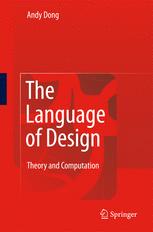

Most ebook files are in PDF format, so you can easily read them using various software such as Foxit Reader or directly on the Google Chrome browser.
Some ebook files are released by publishers in other formats such as .awz, .mobi, .epub, .fb2, etc. You may need to install specific software to read these formats on mobile/PC, such as Calibre.
Please read the tutorial at this link: https://ebookbell.com/faq
We offer FREE conversion to the popular formats you request; however, this may take some time. Therefore, right after payment, please email us, and we will try to provide the service as quickly as possible.
For some exceptional file formats or broken links (if any), please refrain from opening any disputes. Instead, email us first, and we will try to assist within a maximum of 6 hours.
EbookBell Team

5.0
50 reviewsThe Language of Design: Theory and Computation articulates the theory that there is a language of design. This theory claims that any language of design consists of a set of symbols, a set of relations between the symbols, features that key the expressiveness of symbols, and a set of reality producing information processing behaviors acting on the language. Drawing upon insights from computational language processing, the language of design is modeled computationally through latent semantic analysis (LSA), lexical chain analysis (LCA), and sentiment analysis (SA). The statistical co-occurrence of semantics (LSA), semantic relations (LCA), and semantic modifiers (SA) in design text are used to illustrate how the reality producing effect of language is itself an enactment of design. This insight leads to a new understanding of the connections between creative behaviors such as design and their linguistic properties. The computation of the language of design makes it possible to make direct measurements of creative behaviors which are distributed across social spaces and mediated through language. The book demonstrates how machine understanding of design texts based on computation over the language of design yields practical applications for design management such as modeling teamwork, characterizing the formation of a design concept, and understanding design rationale.
The Language of Design: Theory and Computation is a unique text for postgraduates and researchers studying design theory and management, and allied disciplines such as artificial intelligence, organizational behavior, and human factors and ergonomics.